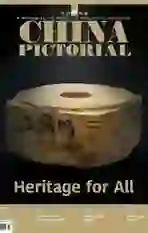Chengdu as Center
2019-12-27byNathanBennett
by Nathan Bennett
I first traveled to Chengdu to see a friend. Traveling to see friends is a wonderful excuse to become acquainted with a new city, and they smoothen the making of the acquaintance. Like one of those big cats taken by a handler to be shown to an auditorium of terrifyingly giggly elementary school students, I cling to a friend who may have been more of a recurring guest star than a regular in the show that is my life. At least that friend is familiar. The new city is not. The cat clings to the handler because the handler at least smells familiar and non-threatening. To my friends relief, I soon loosen my claws, jump off, and start to explore.
A civilization with a continuous history of 5,000 years will feature extensive turnover, renewal, recovery from disaster, and more. So, to truly understand a country like China, one must understand that it has more than one “center.”Chengdu is one of them.
Two places of particular note that I visited in Chengdu are a site associated with Liu Bei, one of the heroes in the Chinese classic novel Romance of the Three Kingdoms and the founder of the state of Shu Han in the Three Kingdoms Period(220-280) of Chinese history, and the Du Fu Thatched Cottage honoring Tang Dynasty (618-907) poet Du Fu. Although neither Liu Bei nor Du Fu were from Chengdu and Liu Bei only concluded his life in Chengdu because he could not fulfill his plan to reunite China in his own lifetime, something about Chengdu caught part of the legacies of these two men within it.
Chengdu is a modern Chinese city like any other. I am most familiar with Beijing, but riding Chengdus equally modern and well-maintained subway gives a sense of the bigness of this city, that here and not just in the capital is the infrastructure well-constructed and well-maintained. The tree-lined streets of Chengdu could be anywhere in China and the Didi ride sharing service is just as convenient, although the Sichuan food is understandably better than in other parts of China. Probably one of the best dishes of Kung Pao Chicken Ive ever had was at a restaurant in Chengdu (named Best Chef of the Millennium, no less). In the neighborhood where my friend lived, the convenience stores were quite good, and I even bought some things to take back to Beijing that I didnt typically see in similar stores there.
China would not be what it is today without having had the room for the shifting and the mixing and the push and pull between all the unique regions of the country. Where modern Chengdu is everywhere visible, the deeper cultural center that is Chengdu has to be found in history. History does not dismiss the present, but it demonstrates trends that the future will likely follow. Where the modern city of Shenzhen has no centuries of history to tell where it might go, Chengdu has centuries of records proving it well-situated in geography and demographics. It is big enough to host regional headquarters, well-developed enough to support international ventures, and far enough from extremes experienced by some other Chinese cities to be free to dream up its own way of doing things.

Chengdu does not have to provide strategic leadership for the Belt and Road Initiative like Beijing, but it is in a forward position to take advantage of it. Chengdu is not world-famous like Shanghai, but the world will be hearing more from it very soon. Chengdu is not sparkling new like Shenzhen, but its ancient prestige anticipates future prosperity in a way that new money cannot buy. Chengdu is prosperous enough to invest in development initiatives and route them through its own regional network. It is one of the ancient centers of China that must be understood on its own terms to truly understand the magnitude of Chinese civilization.
When I compare China to my home country of the United States of America, I can see that to really understand America, New York City, Boston, Atlanta, Dallas, Los Angeles, San Francisco, Seattle, and Chicago all have to be understood on their own terms. Much of America, deprecatingly called“flyover country” as though there is nothing to see there while flying from New York to Los Angeles, is a vital part of the dynamic processes of American domestic politics and what spills over into international policy. In the enormous pageant that is Chinese civilization, what is happening in smaller cities and even out in the rugged countryside drives what happens in the national capital. Chengdus part is dazzling, so visit and find out for yourself.
